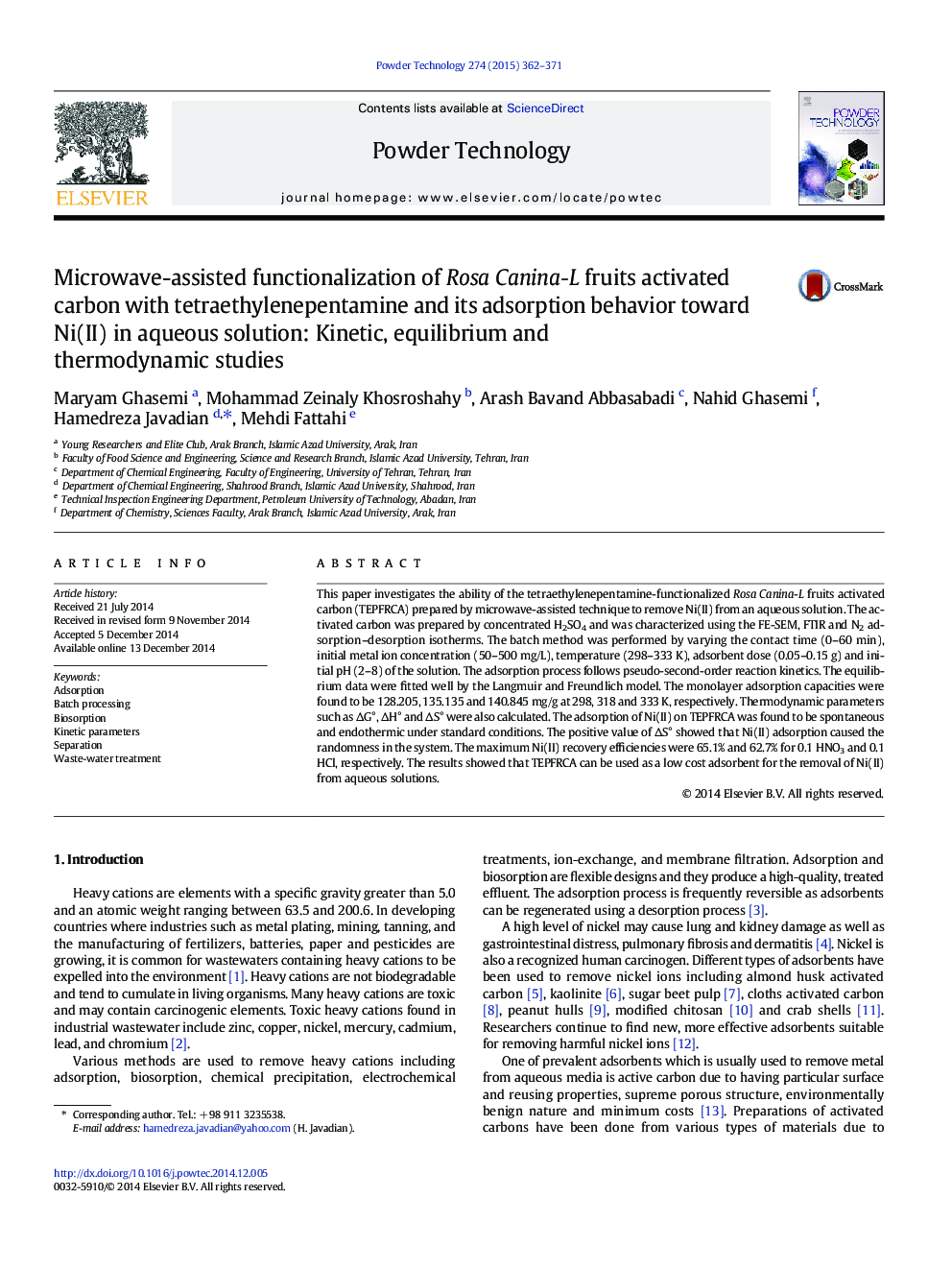| Article ID | Journal | Published Year | Pages | File Type |
|---|---|---|---|---|
| 235735 | Powder Technology | 2015 | 10 Pages |
•RCA was functionalized by microwave-assisted technique.•FTIR showed that amino-group has been successfully grafted onto the RCA.•The isotherm indicates the hysteresis loop type IV due to mesoporous structure.•The sorption behavior of sorbent toward Ni(II) was investigated.•The equilibrium data were fitted well by the Langmuir and Freundlich model.
This paper investigates the ability of the tetraethylenepentamine-functionalized Rosa Canina-L fruits activated carbon (TEPFRCA) prepared by microwave-assisted technique to remove Ni(II) from an aqueous solution. The activated carbon was prepared by concentrated H2SO4 and was characterized using the FE-SEM, FTIR and N2 adsorption–desorption isotherms. The batch method was performed by varying the contact time (0–60 min), initial metal ion concentration (50–500 mg/L), temperature (298–333 K), adsorbent dose (0.05–0.15 g) and initial pH (2–8) of the solution. The adsorption process follows pseudo-second-order reaction kinetics. The equilibrium data were fitted well by the Langmuir and Freundlich model. The monolayer adsorption capacities were found to be 128.205, 135.135 and 140.845 mg/g at 298, 318 and 333 K, respectively. Thermodynamic parameters such as ∆G°, ∆H° and ∆S° were also calculated. The adsorption of Ni(II) on TEPFRCA was found to be spontaneous and endothermic under standard conditions. The positive value of ∆S° showed that Ni(II) adsorption caused the randomness in the system. The maximum Ni(II) recovery efficiencies were 65.1% and 62.7% for 0.1 HNO3 and 0.1 HCl, respectively. The results showed that TEPFRCA can be used as a low cost adsorbent for the removal of Ni(II) from aqueous solutions.
Graphical abstractFigure optionsDownload full-size imageDownload as PowerPoint slide
